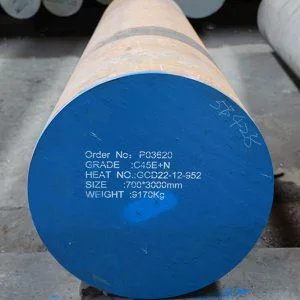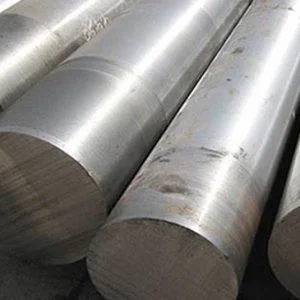Introduction

1045 carbon steel is a widely used material in engineering due to its excellent balance of strength, toughness, and machinability. This medium-carbon steel is known for its versatility and is commonly employed in various industrial applications, from automotive components to structural parts. This blog explores the advantages of using 1045 steel, detailing its properties, benefits, and specific applications. Understanding these factors can help engineers and manufacturers make informed decisions about material selection for their projects.
What is 1045 Carbon Steel?
1045 carbon steel is a type of medium-carbon steel that contains approximately 0.45% carbon by weight. This level of carbon content provides a good balance of hardness and strength, making it suitable for a range of engineering applications. In addition to carbon, 1045 steel may contain small amounts of manganese, which improves its hardness and strength.
Composition of 1045 Carbon Steel
- Carbon (C): 0.43-0.50%
- Manganese (Mn): 0.60-0.90%
- Phosphorus (P): Max 0.040%
- Sulfur (S): Max 0.050%
This composition provides the steel with desirable properties such as good wear resistance, machinability, and strength.
Key Properties of 1045 Carbon Steel
Strength and Hardness
1045 steel is known for its good tensile strength and hardness, which makes it suitable for components that need to withstand high levels of stress and wear. It has a tensile strength ranging from 570 to 700 MPa (megapascals) and can achieve a hardness of 140 to 190 HB (Brinell Hardness).
Machinability
1045 steel offers good machinability compared to other carbon steels. Its balance of hardness and toughness allows for efficient cutting and shaping, making it a preferred choice for components that require precise machining.
Weldability
While 1045 carbon steel can be welded, it requires proper preheating and post-weld heat treatment to avoid issues like cracking. Its weldability is generally good for low to moderate carbon content, and it performs well with standard welding processes.
Heat Treatability
1045 steel can be heat treated to enhance its mechanical properties. Processes such as quenching and tempering can significantly increase its hardness and tensile strength, making it suitable for high-stress applications.
Advantages of Using 1045 Carbon Steel
Cost-Effectiveness
1045 carbon steel is relatively inexpensive compared to alloy steels and high-strength materials. Its cost-effectiveness makes it a popular choice for applications where high performance is needed without a significant increase in material costs.
Versatility
The versatility of 1045 steel allows it to be used in a wide range of applications, from automotive components to industrial machinery. Its properties can be tailored through heat treatment to meet specific performance requirements.
Strength and Durability
With its balanced composition, 1045 steel provides a combination of strength and durability. It is capable of handling moderate to high stress and wear, making it suitable for components that require long-term reliability.
Improved Performance through Heat Treatment
Heat treatment processes such as quenching and tempering can enhance the properties of 1045 carbon steel, making it suitable for demanding applications. This adaptability allows engineers to optimize the material’s performance based on specific application needs.
Ease of Machining
The good machinability of 1045 steel facilitates the production of complex components with precise dimensions. This ease of machining reduces manufacturing time and costs, contributing to overall project efficiency.
Applications of 1045 Carbon Steel
Automotive Components
1045 carbon steel is used in the automotive industry for components such as crankshafts, gears, and axles. Its strength and durability make it ideal for parts that experience high levels of stress and wear.
Structural Parts
In construction and structural applications, 1045 steel is employed for beams, shafts, and other structural elements. Its strength and toughness contribute to the stability and longevity of structures.
Industrial Machinery
For industrial machinery, 1045 steel is used for components like gears, shafts, and machine parts. Its machinability and heat treatability allow for the production of high-performance machinery.
Tools and Dies
1045 carbon steel is used for manufacturing tools and dies, including cutting tools and molds. Its hardness and wear resistance make it suitable for applications that involve high-impact and abrasive conditions.
Agricultural Equipment
In the agricultural sector, 1045 steel is used for parts such as plowshares, harrow disks, and other equipment components. Its strength and durability are essential for handling the rigors of agricultural work.
Comparative Analysis of 1045 Carbon Steel with Other Carbon Steels

The following table compares the properties of 1045 steel with other common carbon steels:
| Property | 1045 Carbon Steel | 1018 Carbon Steel | 1060 Carbon Steel |
|---|---|---|---|
| Carbon Content (%) | 0.43-0.50 | 0.15-0.20 | 0.55-0.65 |
| Tensile Strength (MPa) | 570-700 | 370-440 | 700-900 |
| Hardness (HB) | 140-190 | 120-150 | 200-300 |
| Machinability | Good | Excellent | Moderate |
| Weldability | Good | Excellent | Poor |
| Heat Treatability | Good | Moderate | Excellent |
Key Observations
- 1045 vs. 1018: 1045 has higher tensile strength and hardness than 1018, making it more suitable for high-stress applications.
- 1045 vs. 1060: 1045 has lower carbon content than 1060, resulting in lower hardness but better machinability and weldability.
Conclusion
1045 carbon steel is a versatile and cost-effective material that offers a good balance of strength, machinability, and heat treatability. Its wide range of applications, from automotive components to industrial machinery, highlights its importance in engineering and manufacturing. By understanding the advantages and properties of 1045 steel, engineers and manufacturers can make informed decisions about material selection, optimizing performance and cost-efficiency in their projects.
FAQ
Q:What are the main advantages of using 1045 carbon steel?
A:The main advantages of 1045 carbon steel include its cost-effectiveness, versatility, strength and durability, improved performance through heat treatment, and ease of machining.
Q:How does 1045 carbon steel compare to other carbon steels?
A:1045 carbon steel offers higher strength and hardness compared to 1018 carbon steel but is less hard compared to 1060 carbon steel. It provides a good balance between machinability, weldability, and performance.
Q:Can 1045 carbon steel be heat treated?
A:Yes, 1045 carbon steel can be heat treated through processes such as quenching and tempering to enhance its hardness, tensile strength, and overall performance.
Q:What are some common applications of 1045 carbon steel?
A:Common applications include automotive components (crankshafts, gears), structural parts (beams, shafts), industrial machinery (gears, machine parts), tools and dies (cutting tools, molds), and agricultural equipment (plowshares, harrow disks).
Q:Is 1045 carbon steel easy to machine?
A:Yes, 1045 carbon steel offers good machinability compared to other carbon steels, making it suitable for producing components with precise dimensions and complex shapes.
Q:How does 1045 carbon steel’s weldability compare to other materials?
A:1045 carbon steel has good weldability, though it requires proper preheating and post-weld heat treatment. Compared to higher-carbon steels, it generally has better weldability but may require specific procedures to avoid issues like cracking.
